Here at Bambu Batu, we have been in the business of promoting and educating people about the many wonders of bamboo for nearly two decades. Peruse the website and you’ll discover hundreds of articles addressing nearly every possible aspect of bamboo botany and industry. It’s a real treasure for those who have time to read. But for easier and more immediate access to these fun and fantastic facts, we often create bamboo infographics to go along with our articles.
We’ve received some very positive feedback over the years regarding our bamboo infographics, so we compiled this assortment for quick reference purposes. In the era of tweets and atrophied attention spans, infographics are excellent tools for conveying larger quantities of sometimes complex information. Rather than relying on syntactic eloquence alone, these images engage the reader with a visually organized set of facts and data.
TERMS & CONDITIONS: The following article includes a collection of very sharable infographics showcasing the virtues of bamboo. You are welcome to share them in other articles or on social media, but please cite the source and include a link to this article or to Bambu Batu. Thank you!
Bamboo geography
The featured image above names a couple dozen of the most important genera of bamboo and shows their native regions of origin. More important and prevalent genera like Bambusa and Phyllostachys are written in larger fonts. More obscure genera are written smaller. The color-coding also indicates which bamboos are temperate runners and which are tropical clumpers.
Admittedly, the Latin names of the plants are a bit challenging to read in this illustration. Botanical nomenclature is tricky like that. But this diagram is intended for those who already have some familiarity with bamboo taxonomy and classification.
For more complete information, check out articles on Bamboo Worldwide, Where does bamboo come from? and Introducing Bamboo: Genus by genus.
The many uses of bamboo
Since we first opened our doors at the House of Bamboo in 2006, we’ve been touting the many hundreds or thousands of uses for bamboo. In our small bamboo boutique, we sold bamboo furniture, bamboo towels, bamboo kitchenware, bamboo bedding, and bamboo underwear. We never even got into the business of bamboo construction or bamboo ethanol.
When you look at many of these products, like bamboo socks, which are so deliciously soft and fuzzy, it’s difficult to imagine how you can do that with bamboo. Customers and readers frequently ask that very question. And they also ask us what parts of a bamboo plant are used for these products.
The following infographic does a pretty good job of answering that question and exhibiting bamboo’s astonishing versatility. So do our articles on Bamboo Utility and Bamboo Products from A to Z.
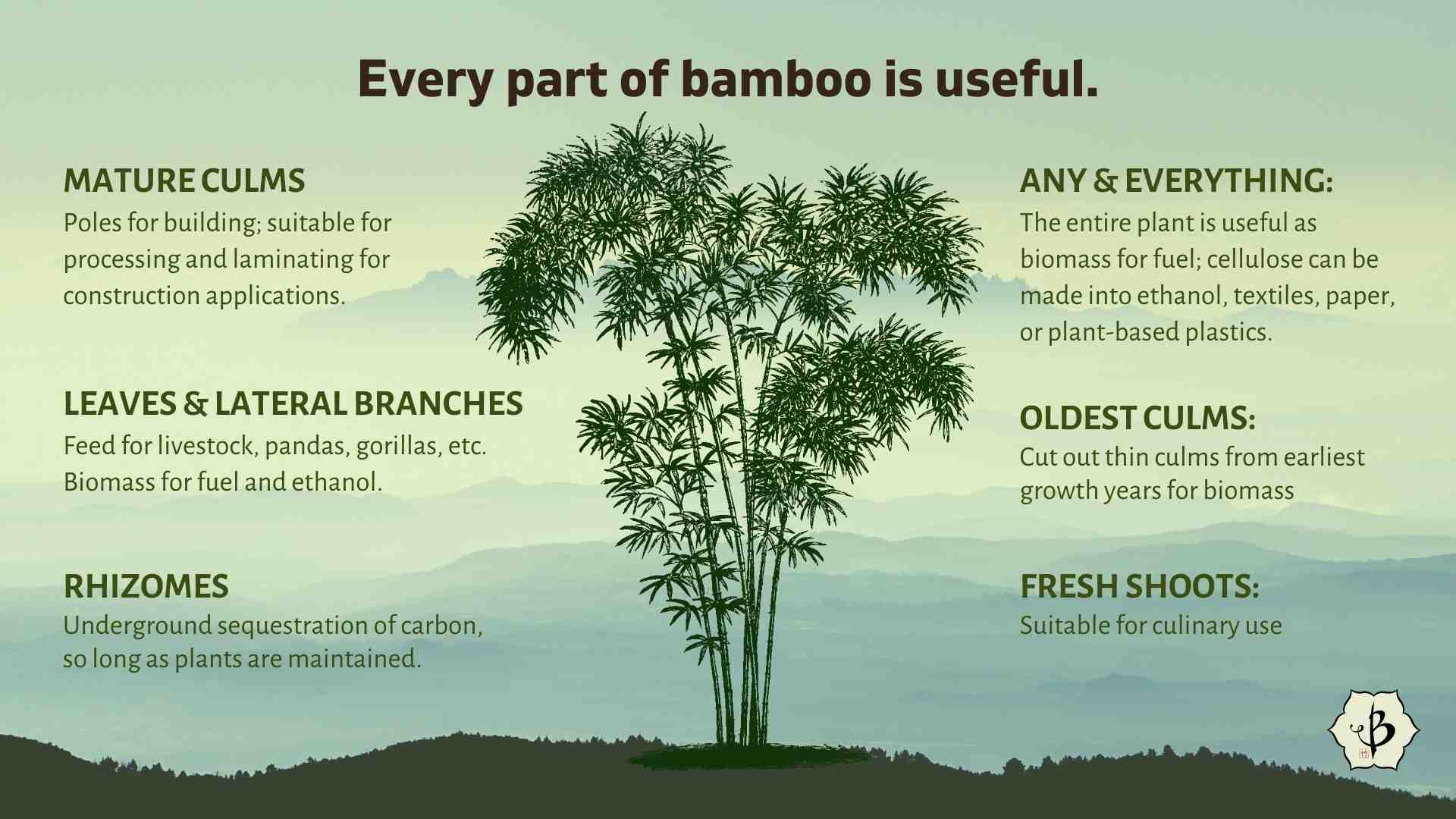
If you’re interested in farming bamboo and wondering about how to monetize, it helps to understand the various products you can make from bamboo. Some growers decide to start a nursery, selling bamboo plants of different sizes and species. But you might want to harvest your bamboo and treat it like a cash crop.
Which products someone decides to make will depend on their variety or varieties of bamboo. It will also depend on whether or not there are factories and facilities in your area that can process bamboo. That’s an especially important consideration for bamboo growers in the United States, where there is almost no bamboo industry infrastructure.
The following infographic shows a variety of products that can be made with or without industrial processing.
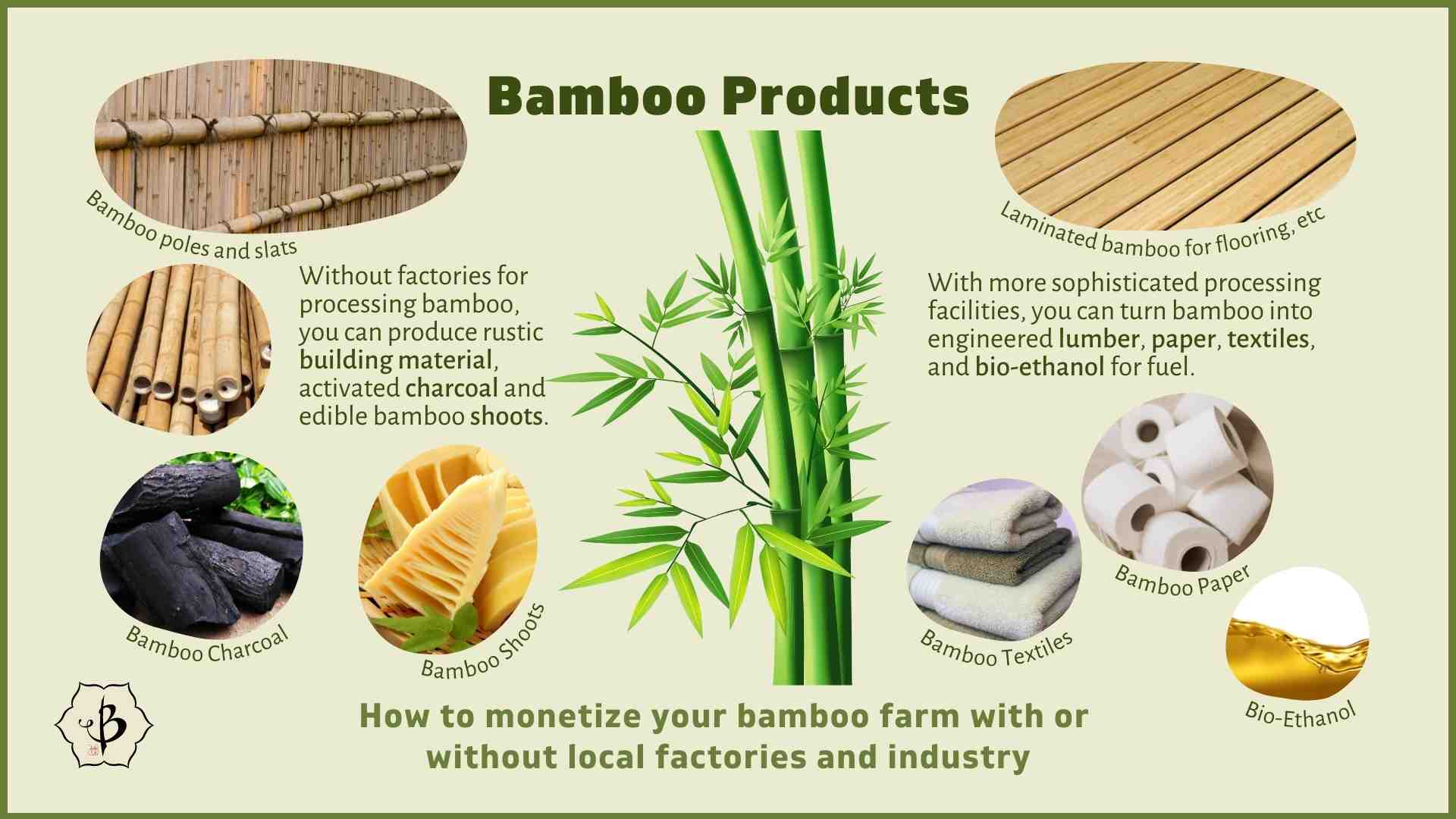
Thanks to bamboo’s unmatched versatility and renewability, the industry around this remarkable plant has been steadily expanding. At this time, China remains the epicenter of bamboo production.

Running and clumping bamboo
The growth habit of bamboo is one of the plant’s more incredible (and intimidating) features. When understanding how bamboo grows, we always begin by explaining the difference between Running Bamboo and Clumping Bamboo.
Running bamboo has the ability to run amok and overtake your garden, while clumping bamboo tends to stay pretty compact. The diagram below illustrates their different anatomical structures which determine how they grow and expand. When you understand these fundamentals, you can quell your Fears About Planting Bamboo.
When discussing bamboo in any detail, it’s also useful to know the proper terminology for the different parts of the Bamboo Anatomy. This illustration helps with that as well.
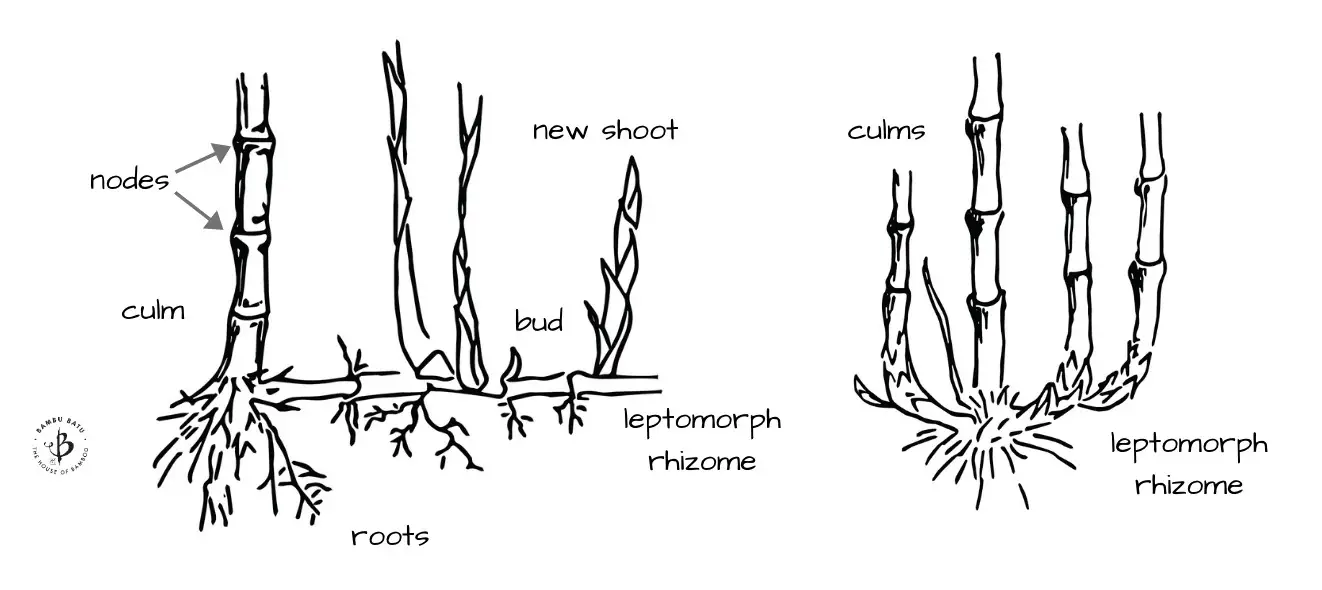
Bamboo for soil enrichment and restoration
One of bamboo’s greatest virtues is its ability to grow on degraded land with poor soil. This grass’s relatively low appetite for nutrients allows it to survive in adverse conditions. And its tenacious roots enable it to get a real foothold on the terrain. As it does so, it also holds the topsoil together for other seedlings that may come and prosper in the shade of the fast-growing bamboo.
To learn more about these benefits, check out our articles on Bamboo as a Pioneer Plant and Bamboo for Reforestation.
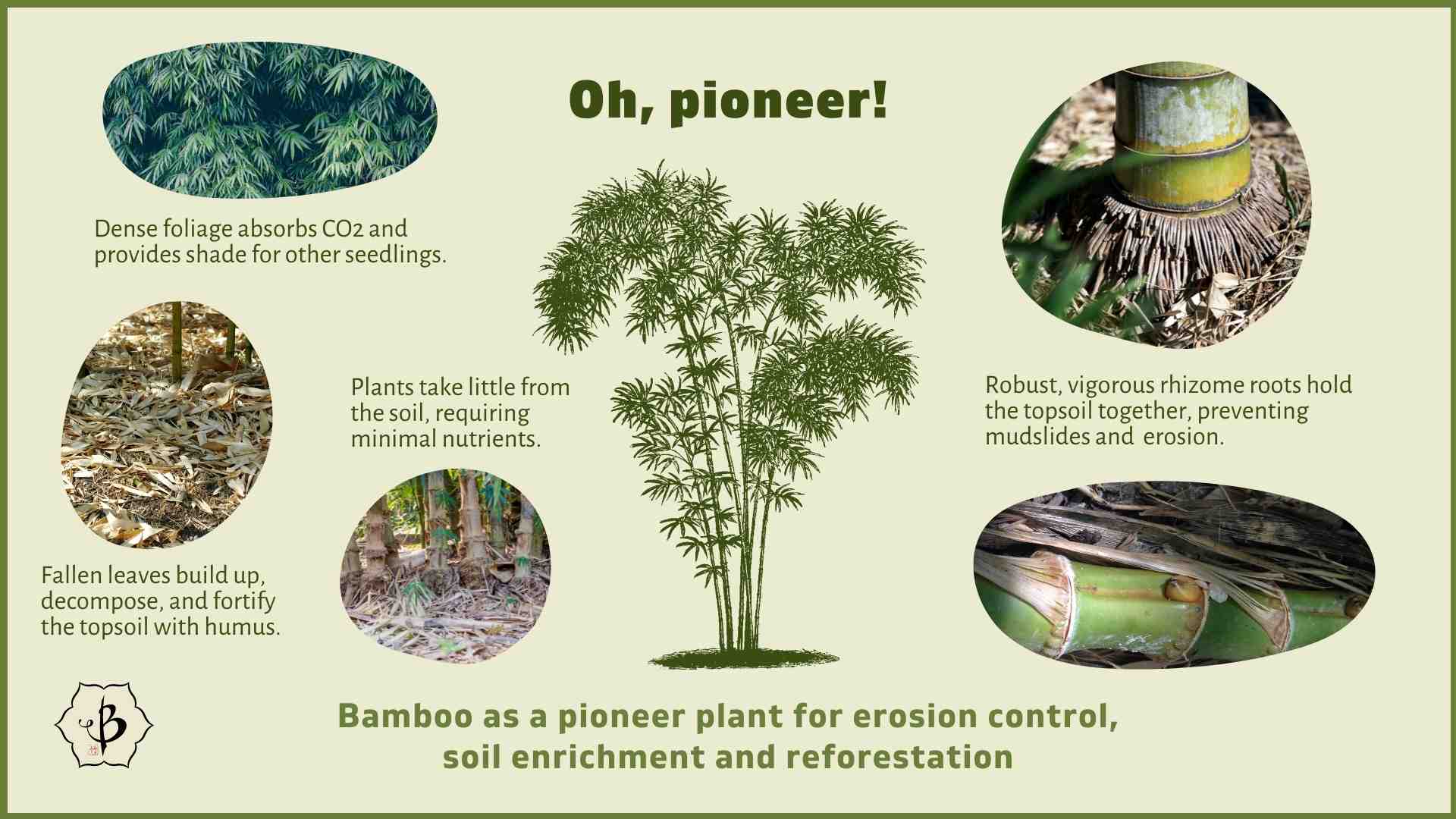
Chop bamboo not forests
Environmental advocates love to list the advantages of growing and harvesting bamboo for lumber, paper, textiles, and energy, as an alternative to cutting down trees. This simple chart helps to convey that one-sided comparison.
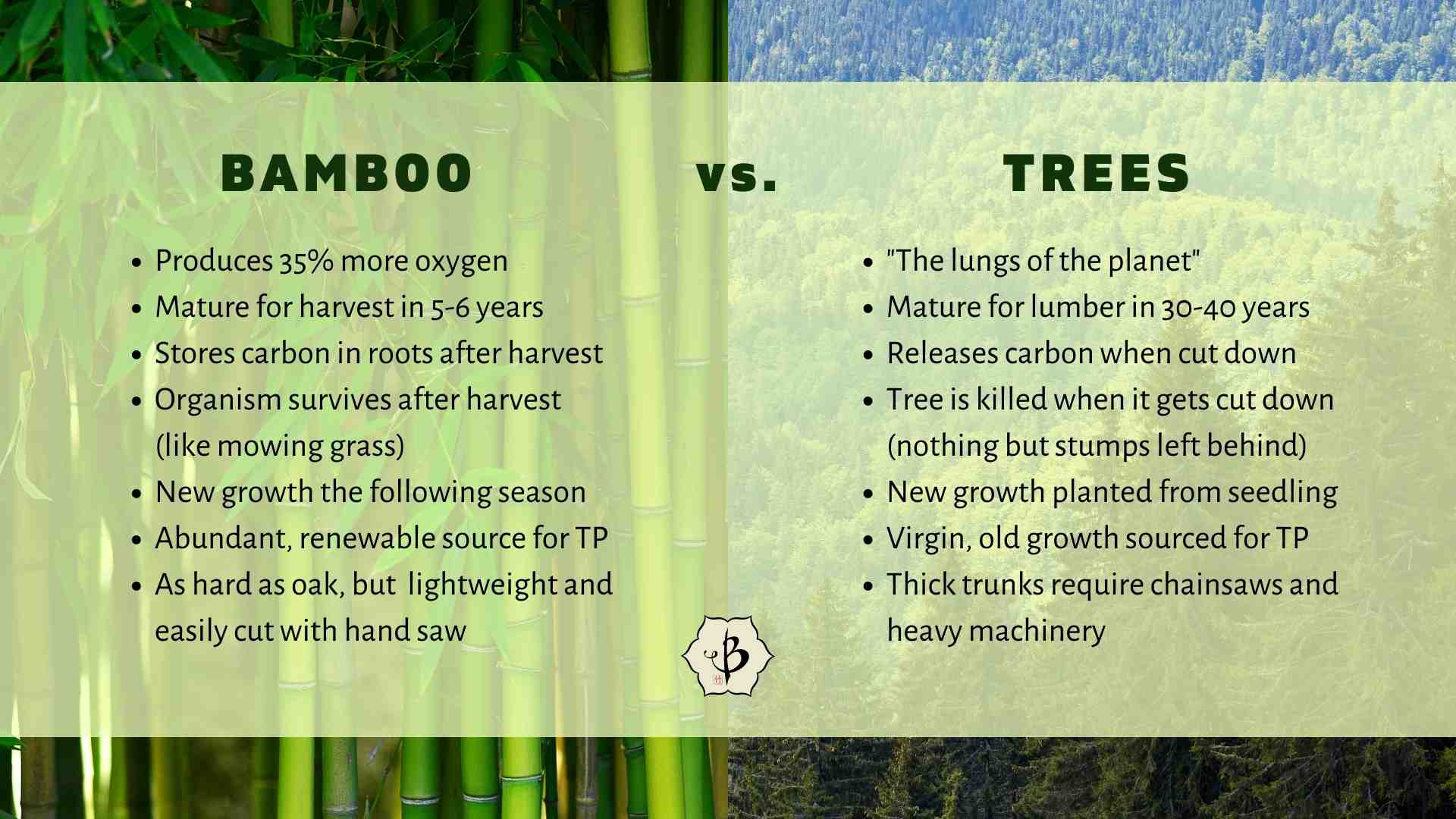
Bamboo farming tips
Bamboo Farming is an amazing idea and a brilliant concept that’s gaining popularity, even in the US and in Europe. Although bamboo grows like a weed, farming it requires a significant amount of agronomical know-how. After all, there are roughly 1,500 species to consider, and every climate and soil type will have its own requirements.
One of the most important considerations is to know your end purpose. Whether you’re growing bamboo for paper, fuel, or high-grade building material, you might take a different approach to managing your farm. The table below spells out some basic strategies and methods for farming bamboo for different uses. This infographic specifically refers to farming Bambusa balcooa, a tropical clumping bamboo from East India.
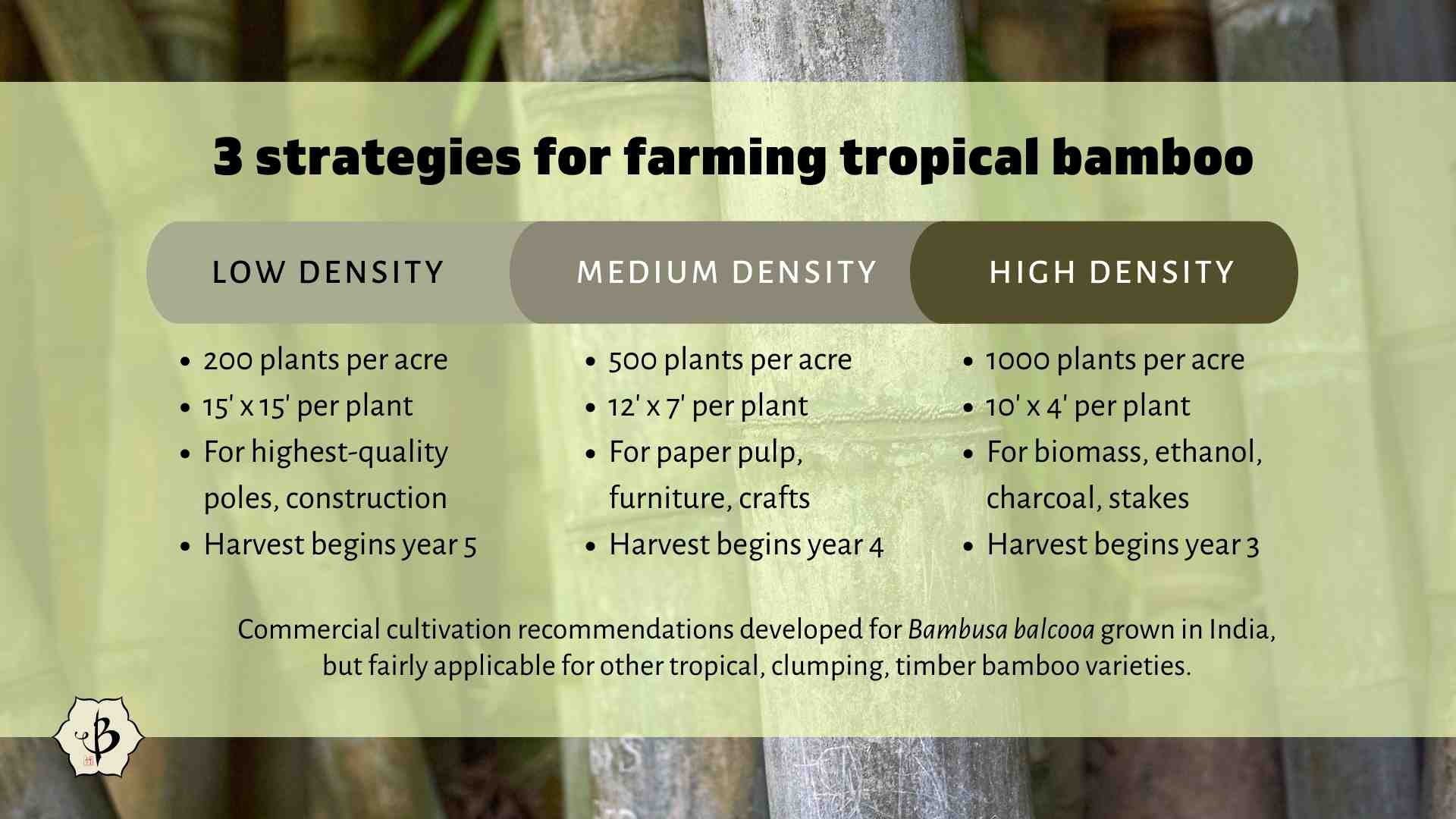
The most important bamboo species
As I just mentioned, there are about 1,500 different Species of Bamboo. But people often paint with broad brushes when they talk about bamboo, making sweeping generalizations about how it grows and what it does. When you look closely, however, there’s an enormous variety of bamboos and a vast array of details to consider.
This basic infographic presents three of the most economically important species of bamboo. Dendrocalamus asper, Guadua angustifolia, and Phyllostachys edulis are the bamboo paragons of Indonesia, Colombia, and China respectively. They are the three most commonly used bamboo species in the construction industry, but they have very different characteristics.
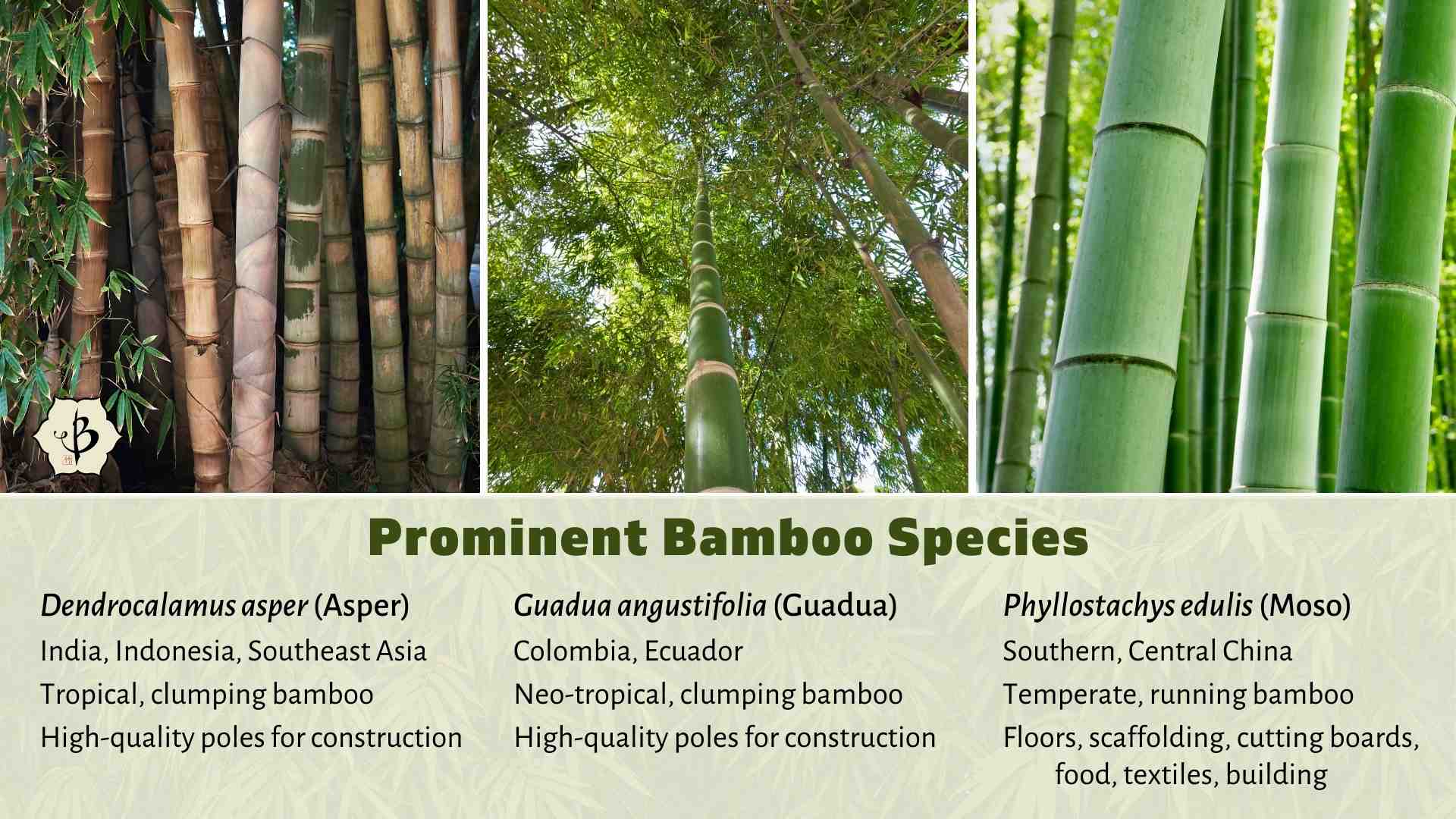
Bamboo taxonomy
For the armchair biologists and botanists out there who love to geek out on taxonomical systems and the web of life, I have also created this engaging diagram highlighting bamboo’s position in the tree of life.
Check out our articles on Bamboo Tribes and Bamboo Genera to learn more.
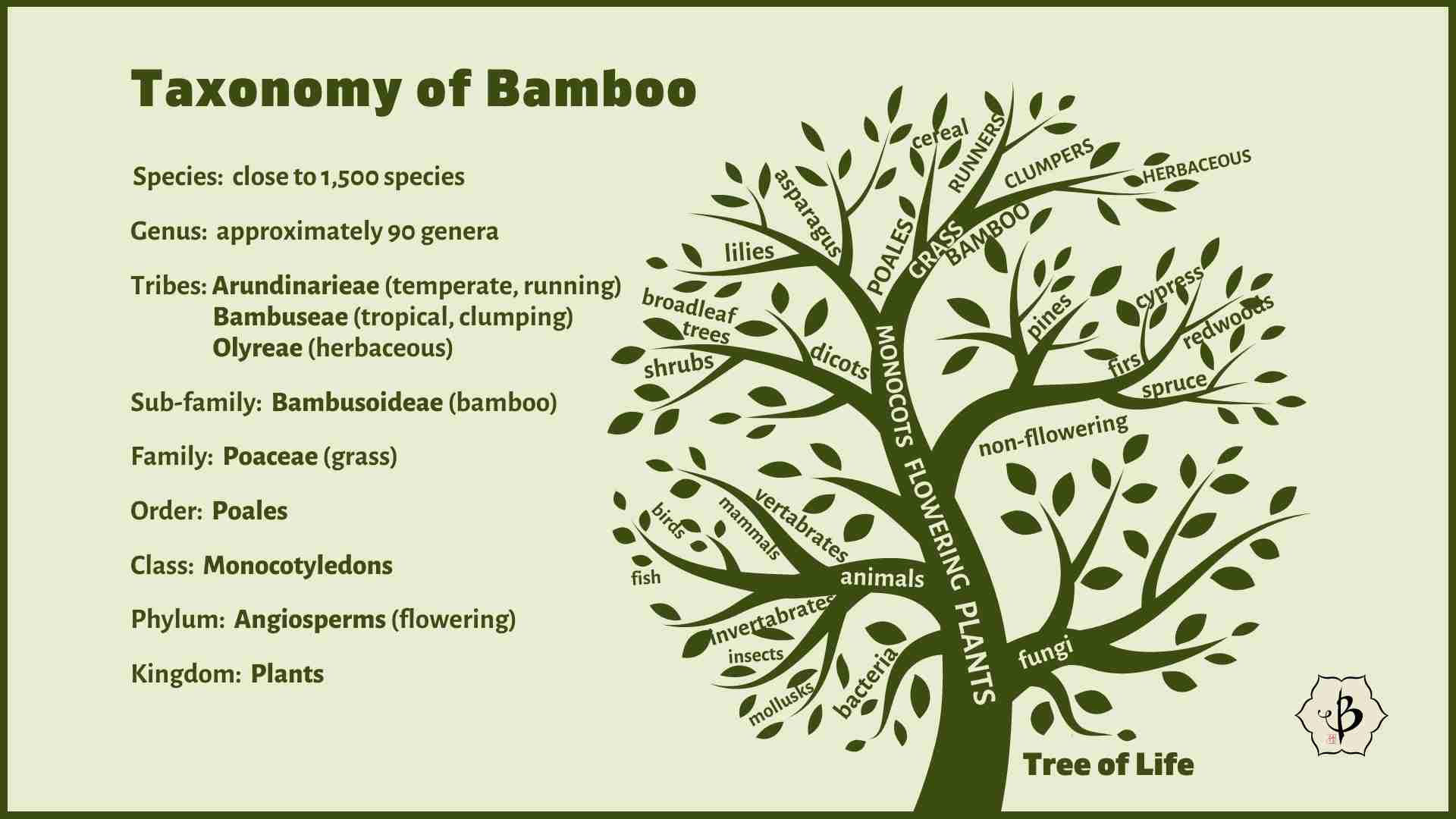
Creating infographics
There’s an art and a science that goes into creating an effective infographic. It requires a thorough knowledge of your subject matter, to help discern what facts to include and which details to leave out. And of course, it takes a bit of artistic finesse, especially if you want to achieve some visual consistency across a portfolio of designs.
But it’s amazing what you can do with a Canva account and a little time on Wikipedia. We highly recommend a Canva Pro account which opens you up to a whole array of powerful tools and helpful shortcuts.
NOTE: You are welcome to share these bamboo infographics in other articles or on social media, but as you spread the word, please cite the source and include a link to this article or to Bambu Batu. This article was last updated in July 2023.

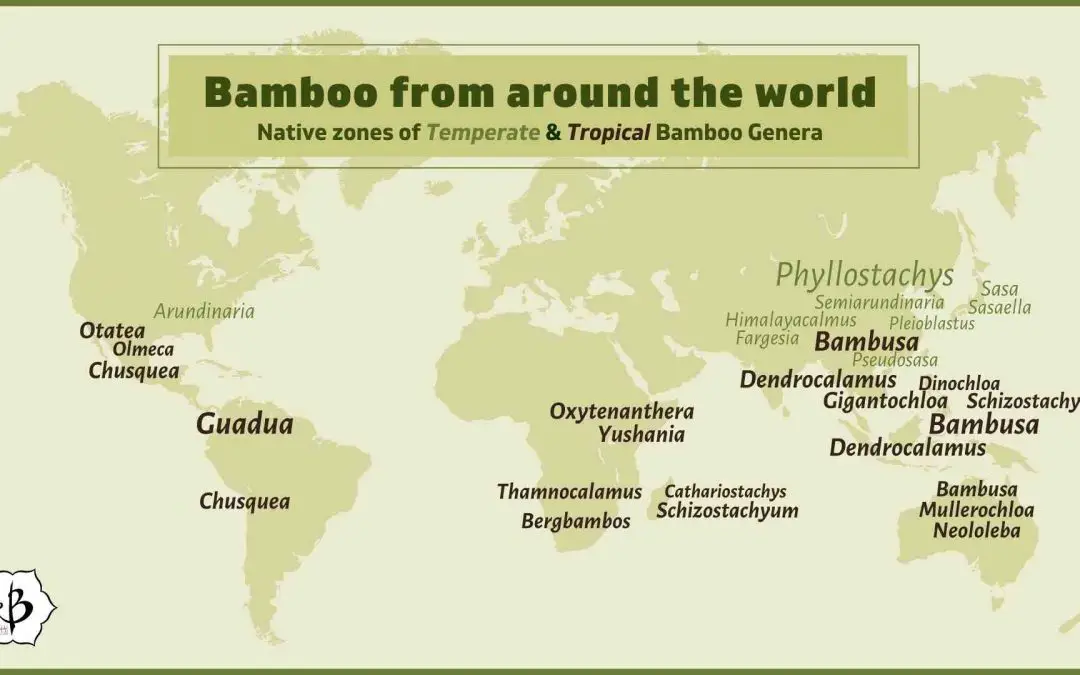
























From Sri Lanka .. love to hear more